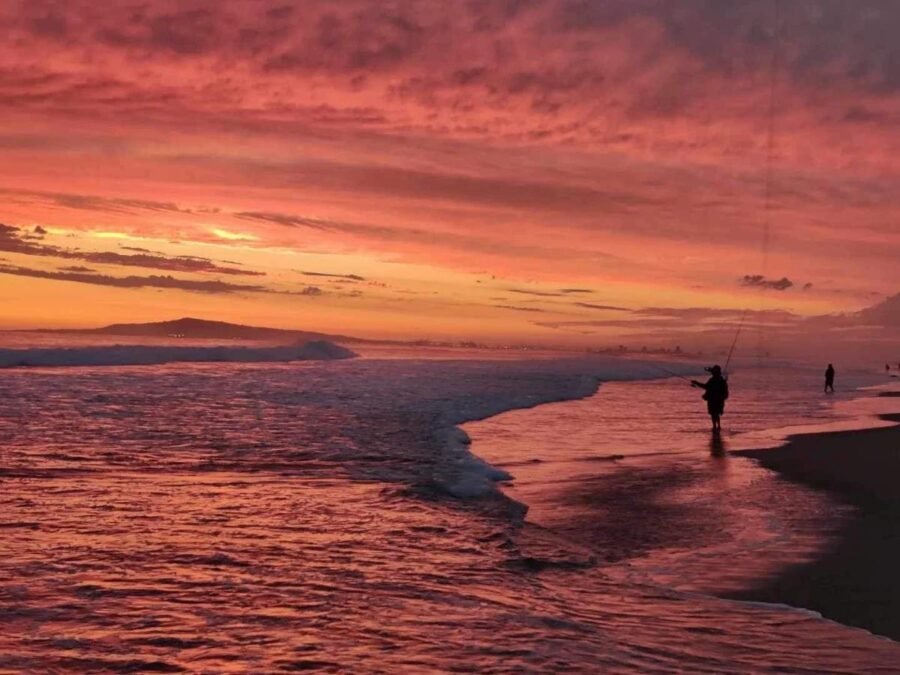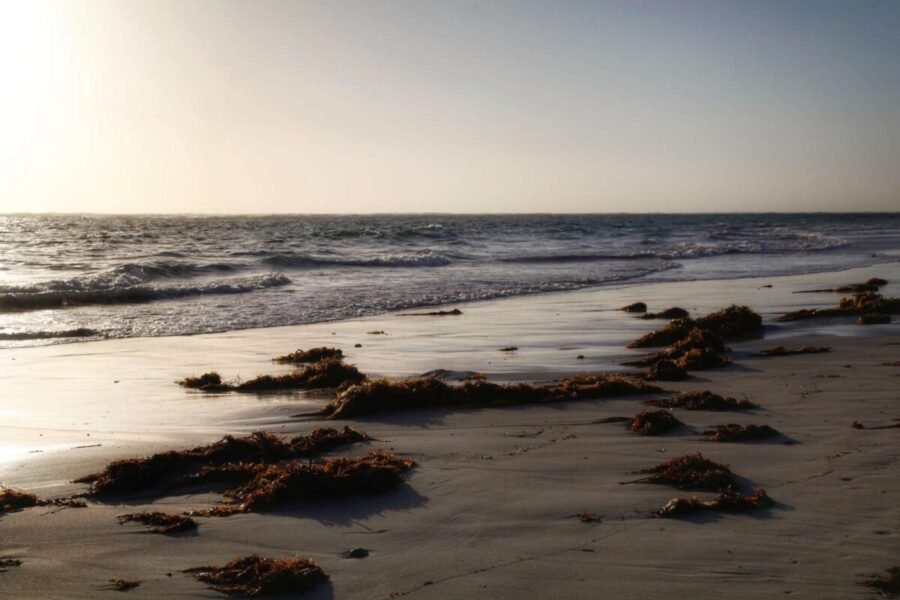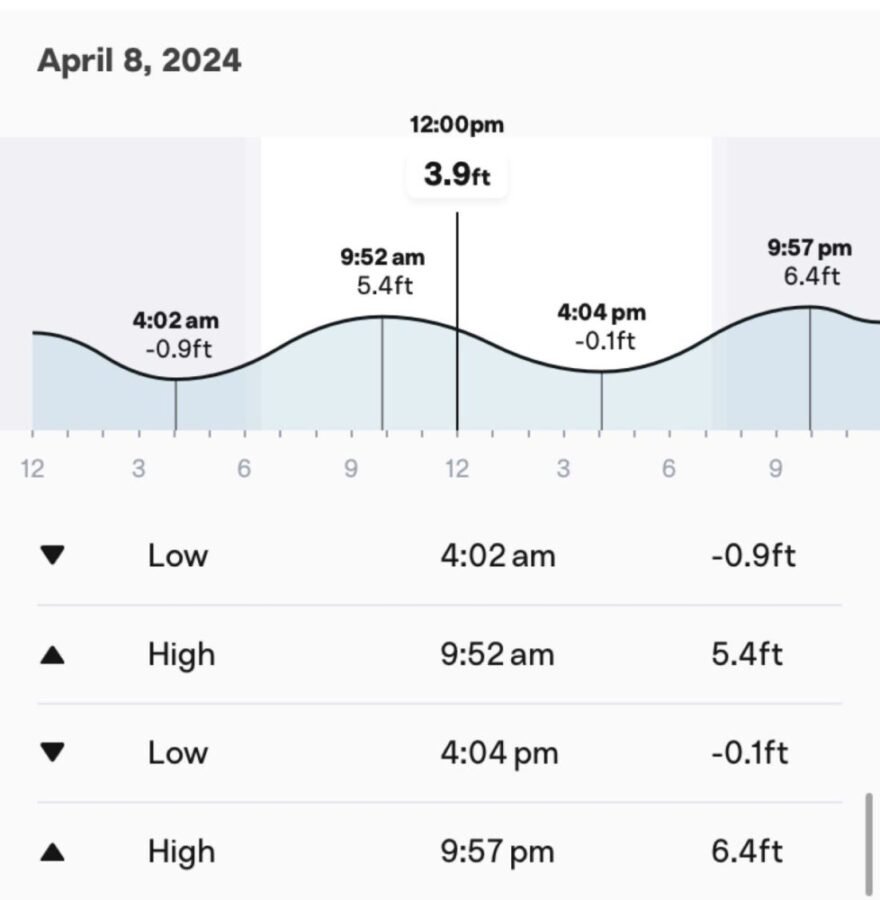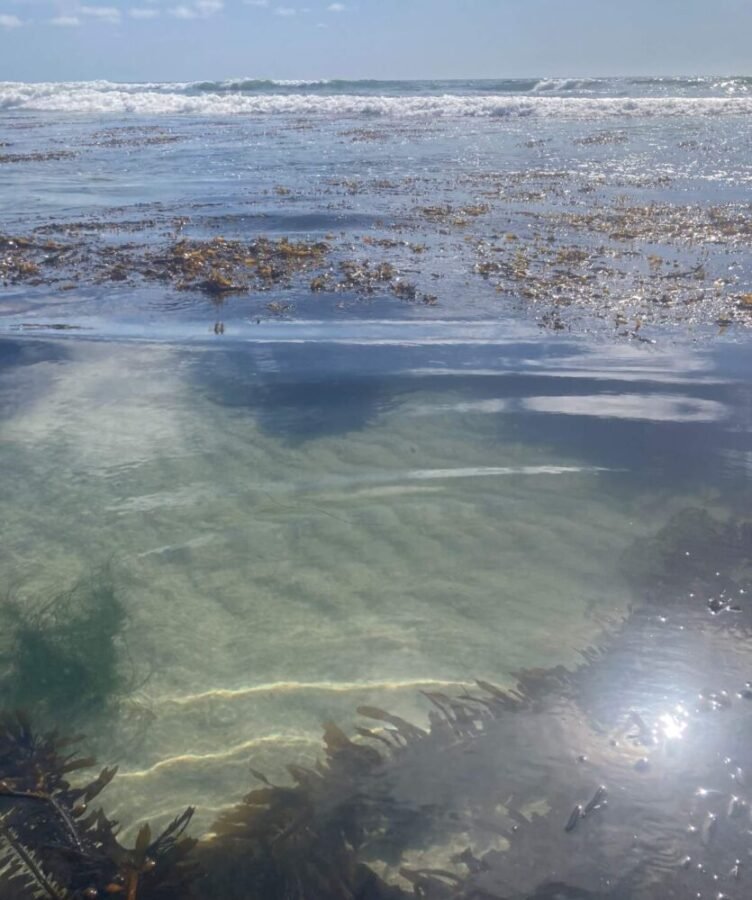Tides for Surf Fishing Explained: A Simple Overview

With all things fishing, anglers tend to overcomplicate things with the goal of deciphering the mysteries of fish behaviors and tendencies. Choosing the best tides for surf fishing certainly falls into that category. While it might sound like a nice idea to crack the code and understand exactly why and when fish feed, it’s simply not possible.
Tides are just one of the many factors to account for when planning a surf fishing trip. But, they are incredibly important and there are a few things you should know about tides and how they affect surf fishing.
In this article, we’ll be doing our best to keep this as simple as possible. Follow along, and as usual, let me know if you have any questions.
What Are Tides?
Tidal height refers to the average height that the water reaches in reference to sea level. This is an important factor to consider because high tides and low tides vary more than you might think. Did you know that some low tides are higher than some high tides? Weird, right?
A quick tip: Check the tides and know what height your local beaches can hold before going out. The last thing you want is to get trapped against bluffs or rocks by a quickly rising tide.
Tidal height refers to the elevation of water relative to sea level. If that sounds weird to you, just wait for what I’ll say next. The difference between high and low tides can and will vary. Even more surprisingly, certain low tides may surpass the height of specific high tides.
Here’s a helpful suggestion: Prior to heading out, review the tidal forecasts and familiarize yourself with your local beaches. Why? Let’s talk a little bit about high tides to understand why.
High Tides

High tides refer to the peak height of a tidal swing. Let’s talk about a few aspects of high tides and surf fishing.
The Dangers
When the tide rises, the water line comes higher up the sand and close to whatever land structure is on the coastline.
It’s likely that many of your local beaches won’t have enough sand between the water and the bluffs at certain high tides to allow access. Understanding this concept can save you from getting trapped against coastal formations like bluffs or rocks, ensuring a safe and enjoyable fishing experience.
When you look at a tidal chart, it should look very similar to the image below. Refer to this image as you read the following paragraphs.

Now, imagine you started fishing around 6am. The tide was pretty low, so maybe you rounded a couple points that aren’t typically accessible at a higher tide.
Say it’s now 9am and the tide has risen too high for you to round that point to get back to where you came from. This can become very dangerous if it starts to get dark or if you’re remote, or if you literally get trapped against the bluffs as waves pound the shore. Bottom line, know your beach’s tide capacity before exploring during a rising tide.
High Tide Fishing Conditions
Higher tides will usually be the roughest of times to fish during any given day. This doesn’t mean it will be rough; just the roughest portion of that given day (aside from maybe early afternoon as wind usually picks up then).
High tides often push lots of water onto steep beaches and when combined with heavy currents, it can make conditions unfriendly to say the least. It may be tough to keep your bait in the water. The bottom line is that high tides can (not always though) amplify rough conditions.
All that said, high tides can also be the best time to fish depending on the beach. You see, different beaches have different structure and terrain, often times varying throughout the weeks and time of year. Sandy beaches’ structure will change daily while beaches with hard structure like rocks and reef may have more consistency in which tides present the best structure to fish.
Low Tides
Low tide presents a unique opportunity for surf fishing. If you aren’t familiar with “King Tides”, I’d recommend checking out the following linked article. There are a number of king tides throughout the year, but essentially, when a king tide occurs, it indicates a high tide significantly higher than the average high tide. Along with it, a low tide significantly lower than the average low tide follows.
King tide or not, utilizing low tides offers a prime opportunity to survey familiar and unfamiliar coastal stretches. This exploration enables anglers to identify structures beneath the water’s surface which would otherwise be submerged and unreachable during higher tides.
Surf fishing during low tide can not only offer the opportunity to fish structure usually out of reach at an average tide, but conditions will often be milder during low tide for similar reasons mentioned above about high tide.
Tides Can Determine Which Beach To Fish
Many popular resources claim that the best time to surf fish is 2 hours before a high tide through an hour or two after the high. In my experience, this is just a line thrown out there to appease the theory-loving enthusiasts we anglers are.
The theory holds some merit and on some days, it could be the right time to fish. But there are plenty of other conditions that hold more significance. For instance time of day and surf height are far more valuable to a corbina fisherman fishing a sandy beach.
Bottom line however, certain beaches can be tide specific. I’ll explain what I mean by this below.
A sandy beach changes every day. This is where understanding how to read the beach is far more important than choosing the right tide to fish. Go find the troughs and holes with your eyes, and fish those zones.
On beaches with hard structure like rocks and reef, these will remain relatively constant throughout a season. Sand loss and sand gain caused by rough winter storms, can slightly change these formations, but generally speaking, the structure should remain constant. These certain beaches have a tidal height in which they are best fished.

In the image above, you can see a sandy hole before in the midst of a kelp covered reef. At the current tidal height, this spot could hold halibut.
Many of our beaches in San Diego don’t offer structure like this at higher tides, so lower tides reveal structure like this and offers an opportunity to fish this type of structure.
Rising Tides
Remember earlier when we mentioned the theory of a rising tide being the best time to fish the surf? This is where that theory holds a little merit. When the tide rises, baitfish will naturally be more willing and comfortable to come closer to shore.
Additionally, they might be even more willing to flow over ledges and into calmer, closer holes feeling confident they won’t get trapped (like they might with a falling tide). Naturally, predators will follow these bait fish.
But, also as mentioned earlier, conditions can get rough during some rising tides. If conditions are mellow and I’m hunting corbina and croaker, the tide might not “determine” when I fish, but if I can line up a rising tide during sunset with mild conditions, that would be great.
Falling Tides
Back to that theory again, the one piece of merit it holds comes into play with falling tides too. During a falling tide, maybe that halibut preying in the tidepool mentioned earlier begins to feel the water level falling and wants to escape before it’s too late.
A falling tide can cause fish to swim further out. However, while all this could be true… fish can and will always be within casting distance.
Tidal Swings
A tidal swing signifies the contrast between high tide and low tide. The magnitude of this difference dictates the extent of the swing. The underlying principle is simple: a wider swing equates to increased water movement, resulting in heightened bait activity.
In my experience, there’s one risk here: expansive swings are ideal provided the water remains sufficiently clear. However, if the water is teeming with debris like weeds and kelp, large tidal swings lose their appeal.
While these factors merely scratch the surface of tide-related considerations, they offer valuable insight into the significance of tides in the realm of surf fishing.
Great article! Thank you Nick!! 👍🎣
Thank you!
I’ve always said tides determine ‘where’ I fish, not ‘when’ I fish. Enjoyed the article Nick
Absolutely agree🤙